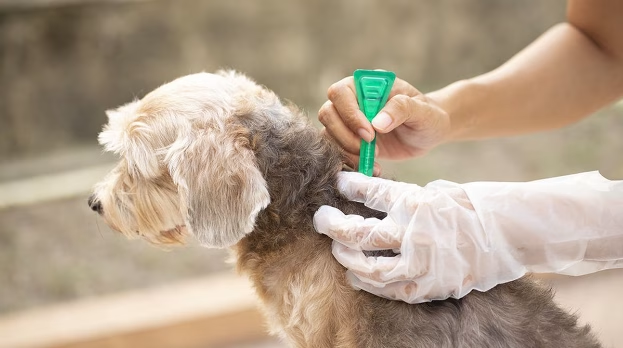Ticks aren’t just an itchy annoyance for dogs—they can carry dangerous diseases that threaten your pet’s health. Two of the most common and serious illnesses transmitted by ticks are Ehrlichiosis and Anaplasmosis. Knowing how to recognize these diseases and take preventive measures is essential for keeping your furry friend safe.
What Are Ehrlichiosis and Anaplasmosis?
Both Ehrlichiosis and Anaplasmosis are tick-borne diseases caused by bacteria. Here’s a quick overview:
- Ehrlichiosis is caused by bacteria from the Ehrlichia genus, often transmitted by the brown dog tick (Rhipicephalus sanguineus).
- Anaplasmosis is caused by Anaplasma bacteria and is usually spread by the deer tick (Ixodes scapularis), also known as the black-legged tick.
These diseases affect a dog’s immune system and can cause serious health complications if not detected and treated promptly.

Symptoms to Watch For
The symptoms of Ehrlichiosis and Anaplasmosis can overlap, but understanding the warning signs for both diseases is critical.
Symptoms of Ehrlichiosis
- Fever
- Lethargy and lack of appetite
- Swollen lymph nodes
- Unexplained bruising or bleeding (such as nosebleeds)
- Pain or stiffness in joints
Symptoms of Anaplasmosis
- Lameness
- Fever
- Loss of appetite
- Vomiting and diarrhea
- Muscle pain
- Neurological issues in severe cases
Symptoms for both diseases can appear days or weeks after a tick bite, so keep a close eye on your dog after any tick exposure.
How Are These Diseases Diagnosed?
If you notice any of these symptoms or suspect a tick bite, take your dog to the vet immediately. The vet will likely:
- Conduct a physical exam, checking for any signs of ticks or abnormalities.
- Order blood tests to detect the presence of Ehrlichia or Anaplasma bacteria.
- Use additional diagnostic tools if necessary to rule out other illnesses with similar symptoms.
Early diagnosis greatly improves the chances of successful treatment.
Treatment Options
Both Ehrlichiosis and Anaplasmosis are treated with antibiotics, usually doxycycline. Treatment generally lasts several weeks, and most dogs improve quickly once the therapy begins. In severe cases, additional supportive care—such as fluid therapy or medications to manage symptoms—may be needed.
Prevention Tips to Protect Your Dog
The best way to avoid these diseases is to prevent tick bites in the first place. Here’s how to protect your pet:
- Use tick preventatives. Monthly tick repellents or collars can be very effective. Speak to your vet about the best option for your dog.
- Check your dog for ticks daily. Pay close attention to areas like under the ears, around the neck, under the legs, and between the toes.
- Maintain your yard. Keep your grass short and eliminate brush or debris where ticks might thrive.
- Limit exposure to tick-prone areas. Avoid long grass, wooded trails, and overgrown vegetation when walking your dog.
- Consider tick vaccines. Some vaccines can offer extra protection against certain tick-borne illnesses. Consult your vet for recommendations.
Why Awareness Matters
Ehrlichiosis and Anaplasmosis are serious but manageable diseases when detected early. By staying vigilant, performing regular tick checks, and using preventive measures, you can significantly reduce the risk of these illnesses affecting your beloved canine companion.
Ticks may be small, but the problems they bring are anything but tiny. Protecting your dog from tick bites is the first step in ensuring their long-term health and happiness.


